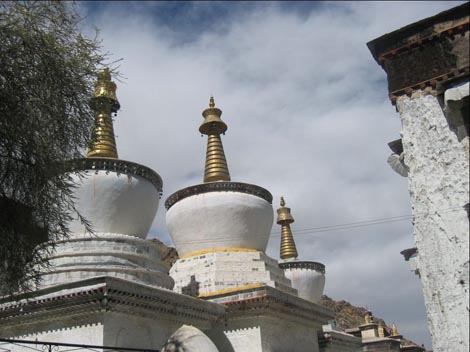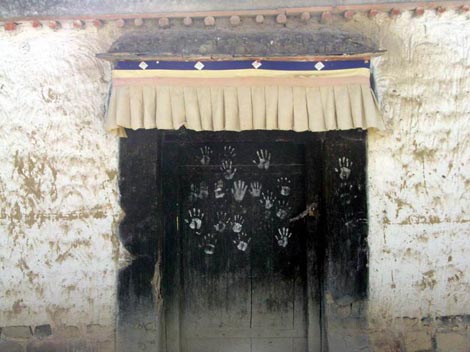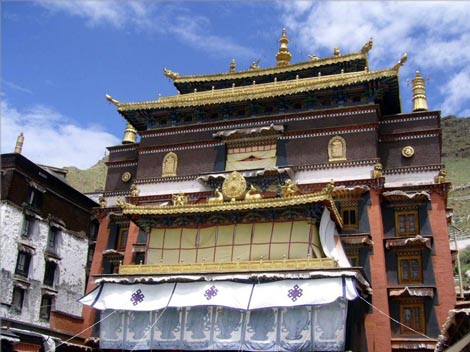more>>More News
- National Day
- ways to integrate into Chinese style life
- Should they be in the same university with me?!!
- Chinese Ping Pang Legend: the Sun Will Never Set
- A Glance of those Funny University Associations
- mahjong----The game of a brand new sexy
- Magpie Festival
- Park Shares Zongzi for Dragon Boat Festival
- Yue Fei —— Great Hero
- Mei Lanfang——Master of Peking Opera
The Tashilhunpo Monastery
By admin on 2015-01-19
The Tashilhunpo Monastery means luck assembly In
Tibetan. It was built by Gendunzhuba, the first Dalai Lama, at the east hillside
of the Nima Mountain west of Xigaze City in 1447. It is the biggest temple in
Xigaze region of Tibet and one of the Tibet’s four great temples. In addition,
it is one of the six most famous temples of Huang Religion (Huangjiao). It is
the place to contain bodies and souls of Panchen Lamas of past
generations. The grand Tashilhunpo Monastery, with an area of 150
thousand square meters, is surrounded by mountains and rivers. Around it are
palace walls built along the mountains in length of more than 3000 meters
decorated with golden roofs and green tiles. There are 57 scripture halls and
3600 rooms in the temple. The Cuoqin Hall, the marketplace for the temple’s all
Lamas to recite scriptures and worship the Buddha, is located in the central of
the Zha Temple. Stupas of Panchens of the fourth to tenth generations were put
in the Soul Tower Temple. Gyinalhakang, the Han Chinese Buddhist Temple, houses
many gifts to the Panchen from the Chinese emperors of past dynasties, such as
ancient porcelain wares, gold and silver goblets, tea sets, bowls and plates,
jade containers and refined fabrics. The earliest objects, the nine bronze
Buddha statues, are said to have been brought to Tibet by Princess Wencheng of
the Tang Dynasty (AD 618- 907). The side hall of the Han Chinese Buddhist Temple
is the meeting room where the Qing-dynasty grand minister resident of Tibet and
the Panchen used to meet. Inside the hall hangs a huge picture of a Qing-dynasty
emperor in kasaya holding a Dharma wheel. Before the picture is a tablet
inscribed with Long live Emperor Daoguang (reigning 1821- 1851). When the
emperor issued a decree, the Panchen would kowtow to express his gratitude
before the tablet after receiving it. Cultural relics preserved in the Han
Buddha Hall (Hanfutang), obviously, proved the subjection relation between Tibet
and the central government. In the east of the Monastery stand seven stupa
halls, among which the most famous one is the Jueganxia Temple, which enshrines
the body of the fourth Penchen Lama. Thanks to its mystery Tibetan Buddhist culture and
its classical temple architechture characterized by local flavor, the
Tashilhunpo Monastery attracts many Buddhists and visitors from home and
abroad.


- Contact Us
-
Tel:
0086-571-88165708
0086-571-88165512E-mail:
admission@cuecc.com
- About Us
- Who We Are What we do Why CUECC How to Apply
- Address
- Study in China TESOL in China
Hangzhou Jiaoyu Science and Technology Co.LTD.
Copyright 2003-2024, All rights reserved




 Chinese
Chinese
 English
English
 Korean
Korean
 Japanese
Japanese
 French
French
 Russian
Russian
 Vietnamese
Vietnamese
